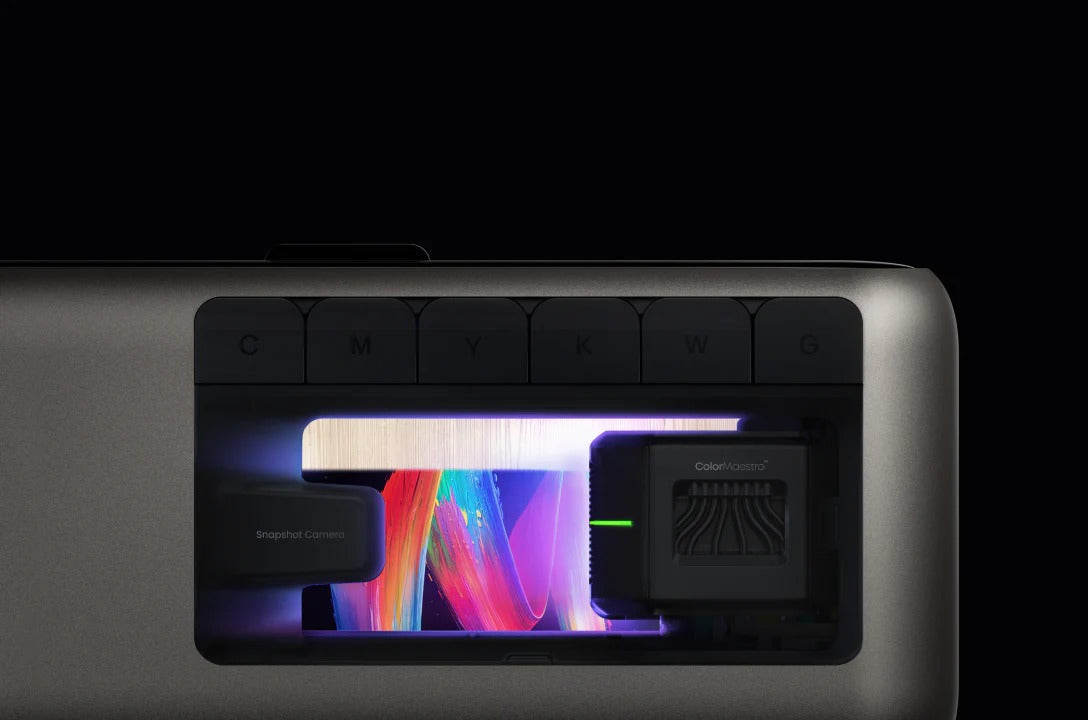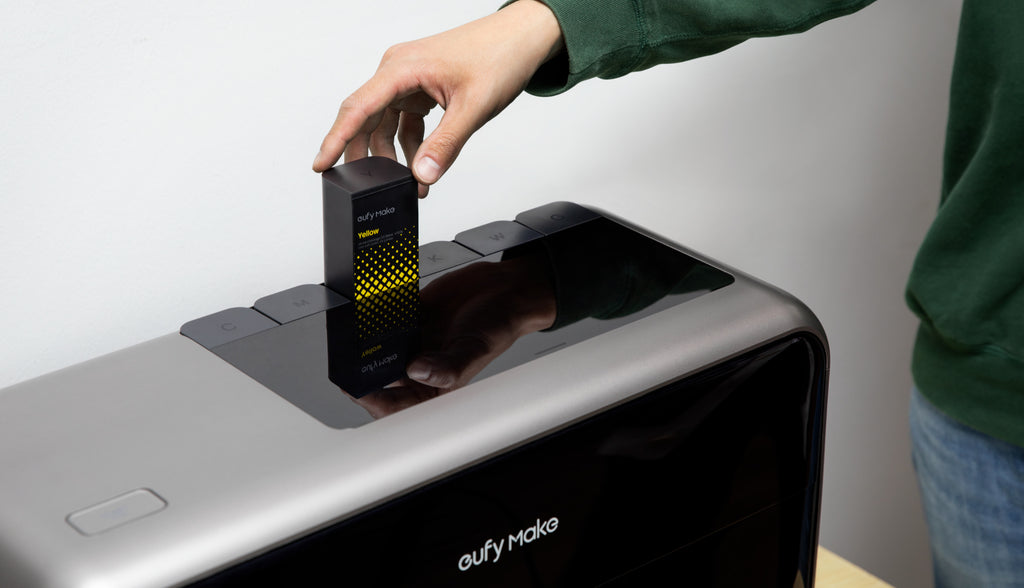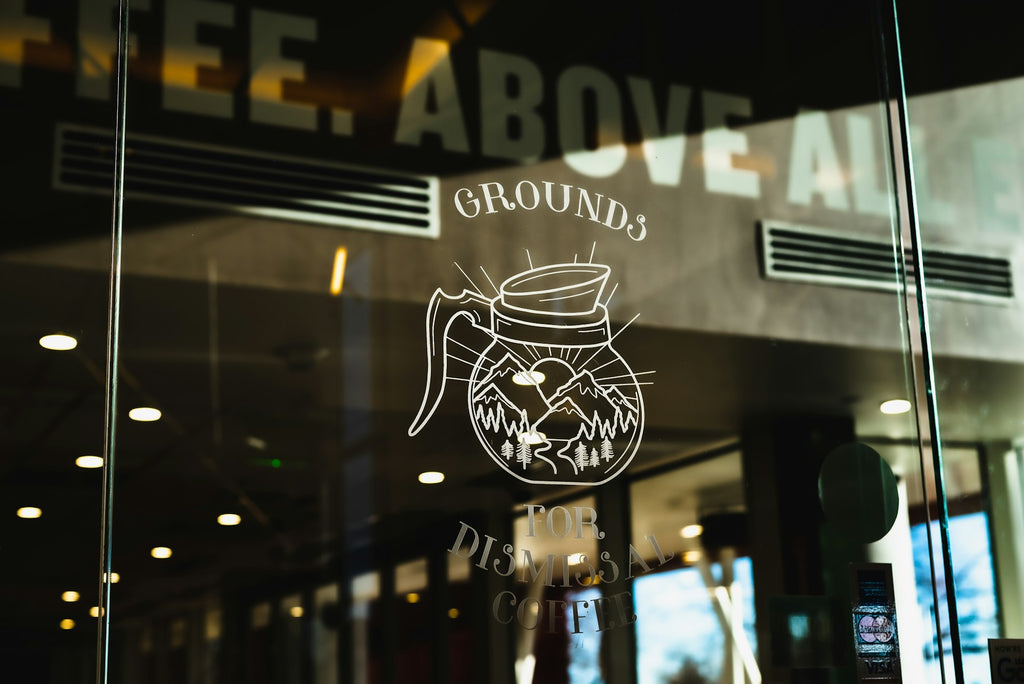3D printing is something most makers are already familiar with, but UV DTF printing might be a concept that’s still a bit new.
Wondering what it means? You're not alone!
This guide will show you how UV DTF printing works in easy-to-understand terms. We'll compare it with other printing methods and explain why it might be just right for your business or creative projects.
What Is UV DTF Printing?
To clarify: UV stands for "Ultraviolet," and DTF stands for "Direct to Film."
UV DTF Printing is a way to make stickers or decals that stick to hard surfaces using UV printer and special film.
The printer places colorful designs onto special films using UV ink. UV light then quickly dries the ink, making a firm print.
Once dry, you can stick this print onto many materials - fabrics, glass, wood, and metal - without needing a heat press.
Compared to sublimation printing, you skip the cost, bulk, and hassle of a heat press machine. That makes the whole process faster and easier.

How Does UV DTF Printing Work?
Now that you know what UV DTF printing is, let's take a closer look at how it actually works. The process combines the precision of UV printing with the flexibility of DTF, and it all starts with the design.
Step 1: Creating the Design
The process begins with making a digital design on your computer. You can use any design software to create logos, artwork, or patterns. Save your design in common file typeslike EPS, AI, TIFF, or PNG.
Double check your design before printing. Make sure the colors are accurate and the resolution is high enough for a clean, sharp result.
Step 2: Printing the Design onto the A-Film
Next, your design is printed onto a special plastic sheet called PET A-film, which serves as the base for the process.
The A-film has a layer of adhesive on its surface, protected by a removable film. And you’ll need to carefully peel off this protective layer to expose the adhesive before printing.
Once the A-film is ready, the UV DTF printer uses UV-curable inks to print your design directly onto the adhesive layer.
Step 3: Adding the B-Film Layer
After printing your design on the A-film, you’ll add a clear sticky sheet (called B-film, a PVC-based sheet) on top of it.
The B-film has stronger adhesive than the A-film, so when you press them together, the design and adhesive from the A-film stick to the B-film
Think of this B-film like the sticky part of a sticker - it helps your design stick to whatever surface you want to put it on later.
Optional Tool:For a more precise and bubble-free application, you can use a UV laminating machine to press the A-film and B-film together.

Step 4: Putting the Design on Your Item
This is where UV DTF printing really shines! Unlike other methods, you don’t need any special heating equipment. Simply:
- Separate the backing A-film from the top B-film (your design stays on the B-film)
- Place the B-film (with the design facing down) onto the surface of your item
- Use a flat tool, like a squeegee or scraper, to press down evenly across the entire design. This ensures the adhesive bonds securely to the surface.
- Slowly peel away the B-film.The design will stick to the item’s surface, while any excess adhesive is removed along with the B-film.
That’s it! Your design now sticks firmly to your item. It won’t easily fade or come off when washed or used. The whole process is quick and gives great results without complicated equipment.
UV DTF vs UV Printing vs DTF Printing: What Are the Differences?
As you see, UV DTF printing, UV printing, and DTF printing share some similarities, but they each have distinct processes, applications, and advantages.
Here's a breakdown of their differences:
| Feature | DTF Printing | UV DTF Printing | UV Printing |
|---|---|---|---|
| Best for | Fabrics like t-shirts, hoodies, bags | Hard & curved items like bottles, mugs, phone cases, signs | Hard & flat items like signs, plaques, and rigid packaging |
| Materials | Cotton, polyester, fabric blends | Metal, glass, plastic, wood, ceramics, leather & more | Metal, glass, plastic, wood (flat surfaces only) |
| Surface Type | Soft & flexible | Hard, smooth, flat or curved | Hard, smooth, flat |
| Printing Method | Prints on film, adds adhesive powder, then heat presses to fabric | Prints on film, cures with UV light, sticks like a sticker (no heat press) | Prints directly on item surface and cures with UV light |
| Transfer Step? | Yes – heat press needed | Yes – manual transfer with peel-off film | No – printed directly onto object |
| Curved Surface Friendly? | No | Yes | No |
| Heat Required? | Yes – heat press | No – uses UV light | No – uses UV light |
| Equipment Cost | Low – affordable for small businesses | Medium – more costly due to special printers and UV film | High – professional-grade machines |
| Who It’s For | Clothing brands, small print shops | Crafters, hobby sellers, personalized gift businesses | Larger businesses, sign shops, premium product printers |
| Speed of Use | Slower – needs heating & pressing | Faster – peel & stick after UV cure | Fast – prints directly with UV light |
You might be wondering if there's a machine that combines the strengths of both UV and UV DTF printing. The eufyMake E1 is the answer.
It's compact, affordable, and offers a good print size. With three add-ons, it supports UV DTF, roll-to-roll, and rotary printing. This means you can print on film, flexible materials, and even round items like mugs and bottles.
If you're a small business or maker looking for UV and UV DTF printing in one device, the eufyMake E1 UV Printer is a smart and space-saving choice.

Benefits of UV DTF Printing
There are six key benefits that make UV DTF printing a popular choice. Here’s a simple breakdown:
Sticks to Almost Any Surface
UV DTF prints stick firmly to almost anything—wood, acrylic, metal, leather, glass, stone, paper, and ceramics. The possibilities are limitless!
No Heat Press Needed
The UV light instantly hardens the ink during printing, eliminating the heat press step needed in regular DTF printing. This speeds up production and works better for heat-sensitive materials.
Tough, Long-Lasting Results
These prints resist scratches, water, sunlight, and chemicals. Your designs won't fade, crack, or peel, even on outdoor items or frequently handled products.
Sharp Details and Bright Colors
UV DTF creates vivid colors and fine details even on dark or clear surfaces. The prints show exact gradients, tiny text, and complex designs clearly.
Faster Production with Less Waste
The instant-cure technology speeds up printing time while using less ink than screen printing or heat transfers. This cuts costs and reduces material waste.
Better for the Environment
UV DTF uses less energy than heat-based methods. Many UV inks contain no harmful solvents, making this a greener option for eco-conscious businesses.
Popular Uses for UV DTF Printing
UV DTF printing is all about flexibility. It sticks to surfaces that other methods avoid—curved, textured, glossy, or anything in between. You don’t need heat or pressure to apply it, and the ink holds up well over time. That’s why it’s showing up in so many different spaces.
Automotive Decals & Personalization
One of the most common uses is car decals. These prints go straight onto windows, doors, or interior panels and stay put, even after months of sun, rain, or washing. You can get sharp details and bold colors, and it doesn’t peel or fade the way traditional vinyl sometimes does.

Image: Felix Fuchs
Skateboards & Sports Gear
The same thing applies to skateboards. Decks aren’t flat—they’ve got curves and rough textures, and they take a beating. But UV DTF transfers stretch over those shapes and stay there. No bubbling, no lifting, even after a few tricks or wipeouts.
Labels for Small Product Batches
For things like spice jars, handmade soap, or gift boxes, UV DTF lets you create custom labels that feel like part of the packaging.
Once printed, the label peels off the film and goes on smoothly—no bubbling, no edges sticking out. It wraps around curves and corners with a clean, seamless look.
Electronics & Tech Accessories
UV DTF is great for decorating tech items with curved surfaces. It sticks well to shapes like ergonomic mice, curved gaming controllers, and rounded smartwatch bands. The flexible film molds to these non-flat surfaces without cracking or peeling
Signs, Displays& Tags
UV DTF is also used for labels and signs on surfaces like acrylic, metal, and wood. It’s good for things like machine tags, shop displays, and nameplates. The ink is cured right after printing, so it’s tough enough for indoor and outdoor use.

Image: ThisFact
Final Thought
Now you know what UV DTF printing is all about, and why it's becoming so popular for businesses wanting better printing options. If you need custom designs that last on challenging surfaces, this technology is better than standard UV or DTF processes. For your next custom printing project, UV DTF might be exactly what you need.
FAQs
What is a UV DTF printer used for?
A UV DTF printing machine is used for customizing hard surfaces such as bottles, phone cases, signage, and industrial labels. It allows for high-resolution, scratch-resistant prints on non-porous materials without requiring direct printing or heat transfer.
How long does UV DTF last?
UV DTF prints are very durable. Outdoors, they last at least 2 years without significant fading. Indoors, they can last many years with proper care.
Can you use UV DTF for shirts?
No, UV DTF printing is not designed for fabric or textiles. It works best on hard surfaces like glass, metal, and plastic. For printing on shirts, traditional DTF printing or screen printing is recommended.


